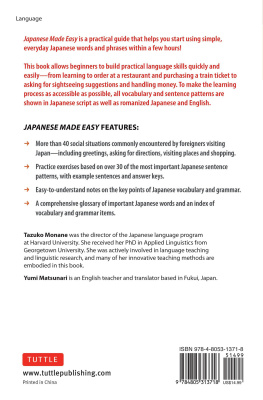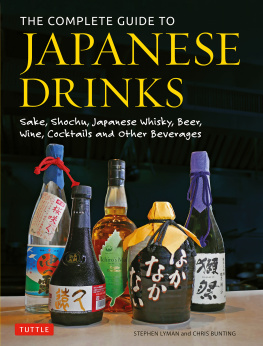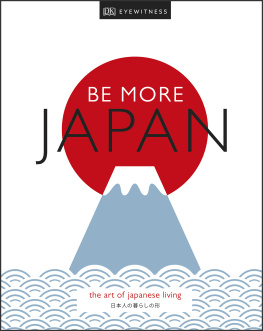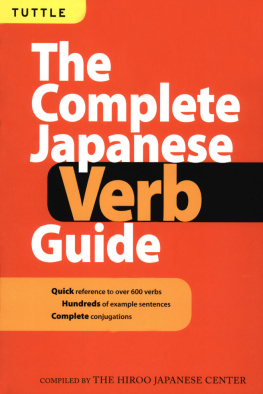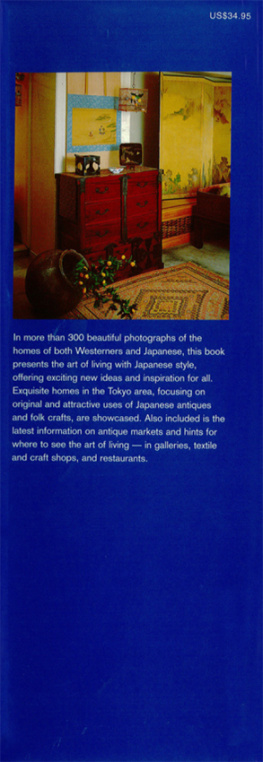HOW TO LIVE JAPANESE

CONTENTS
Guide
Introduction
Tokyo is an overwhelming place, even for the Japanese. The city itself officially known as Tokyo Metropolis contains over 13 million people. The commuter region immediately around it is home to almost 44 million. In the era of megacities, Tokyo is the biggest of all.
When I come home to Tokyo from overseas, what always strikes me is that nearly all the people are Japanese. It may sound obvious, but the level of diversity one gets accustomed to in other major cities of the world ethnically, culturally, aesthetically is comparatively absent in Tokyo. At least at first glance. Chinese cities may come close in such racial homogeneity, but in Tokyo, the visual uniformity swallows you up, especially during the busy commuting hours. There is a sense of claustrophobia on a grand scale. And that is the first paradox you encounter in Japan. What appears to be the same can be very different in millions of not so obvious ways. Here, diversity is deep, if subtle.
Tokyo is a relatively young city. It was established in 1603 in the village of Edo as the capital city of the Tokugawa shogunate a new military government while Japans emperor remained in the formal capital of Kyoto. Edo flourished, with major civil engineering improvements such as vast land reclamation, the redirecting of major rivers, and aqueducts serving the growing population. However, Edo, and later Tokyo, also suffered several fires, earthquakes, more fires, more earthquakes and, most recently, American carpet bombing during the Second World War.
When the shogunate finally fell, the Emperor went to stay at the now-empty Edo Castle as a temporary measure. Kyoto, the main capital since 794, is still waiting for the return of their Emperor.
Tokyo is essentially the worlds foremost scrap-and-build-city. Tokyo Tower, the citys most iconic postwar building, was built with the scrap metal from Sherman tanks used in the Korean war which the Americans didnt bother to ship back home. There is another paradox there. In Japan, what appears old is new, and vice versa.
Of course, Tokyo is only one part of Japan. Over 70 per cent of the country is mountainous, and two-thirds is covered by forest. Nature also makes its presence known through periodic typhoons and more-frequent-than-good-for-peace-of-mind earthquakes. The world-famous Shinkansen bullet train shoots across the front of Mount Fuji, one of the many volcanoes which are actively dormant (or dormant-ly active, depending on which geologist you listen to). Despite having some of the worlds most advanced technology, for the Japanese, their environment instils both fear and reverence. European-style religious ferment didnt take hold in Japan, but the Shinto belief in animism still exists in its ancient, raw elements. You can see examples of this in animated films created by the likes of Hayao Miyazakis Studio Ghibli.
What follows in this book is my personal attempt to explain these paradoxes, topic by topic, so that you may gain some depth to the images of Japan that meet your eyes to give you a sense of Japan in 3-D, as it were.

As a personal attempt, I freely admit that my expositions are not free from subjective prejudice, borne out of my upbringing and experiences. For the sake of fairness, I will make them clear at the outset. I was born in 1970 on the outskirts of Tokyo, and brought up there until I was 19 years old. As a result, I am naturally partial to Tokyos ways, as opposed to living in the country or even life in provincial cities. You would be correct to sense elements of a superiority complex in my way of describing the provinces, cities and towns outside Tokyo. It creeps in against my better judgment. I have spent most of my adult life living abroad. I was in the UK for 11 years, there were nine years in Hong Kong, and a year in New York, before returning to Japan at the age of 42. I would like to think, therefore, that I share at least some of the perspectives of non-Japanese people in looking at my own country.
You might also feel that I am overcritical in relation to some aspects of Japanese society. I have two answers to that. Firstly, make no mistake: I love my country. However, as Malcolm X said, you are not supposed to be so blind with patriotism that you cannot face reality. There is something wrong if your moral compass takes second place to loving your country. I have tried to be honest to my own values and sensibilities in writing this. In that sense, this is truly personal.
Secondly, I believe that modern Japanese people are, by nature, self-critical. As a result, they are also, in general, insecure. This is historical in its origin. Our country, closed to foreigners, had been ruled by the samurai, who were supposed to be superhumanly brave and strong. But they did not stand a chance against the Black Ships the Europeans, and later on, Americans who forced Japan open. The old order collapsed.
The American ships arrived in the 19th century, which is almost just yesterday in terms of our long history. Ever since, in the shadow of western imperialism, we asked ourselves if we had become good enough to stand on our own. That question acquired a renewed sense of urgency following two atomic bombs and defeat in the Second World War. More recently, the rise of nearby China has added relevance to that question. We are a nation obsessed with a sense of obligation to improve ourselves, and insecurity runs deep to the core of our character.
You may find other traits of my partiality of which I am not as aware as those mentioned above. I thank you in advance for your kind generosity in accepting them as my personal shortcomings, and hope that you find what follows nevertheless informative.
Areas of Japan
Kant
Kant is the area around Tokyo (), made up of seven prefectures: Tokyo, Kanagawa, Chiba, Saitama, Gunma, Tochigi and Ibaraki. From the old capital of Kyoto, it was the eastern frontier land, with the name Kant meaning east of the toll gate. It was also sometimes called Band, meaning east of the slope, as travellers from Kyoto saw the huge marshy plain emerging in front of them as they descended from the central mountainous region.
The samurai thrived in Kant. When the first shogunate government was established in the 12th century, it chose the city of Kamakura, in present-day Kanagawa prefecture, as its capital. Thus started an age-long rivalry between east and west in Japan. In response to Kant or Band, people gave the name Kansai () to the area around Kyoto (and later Osaka), meaning west of the toll gate. To this day, the difference in culture and dialects between the two areas are often highlighted, rather than ignored. Kant people generally regard Kansai as old-fashioned, while Kansai people think those from Kant are unsophisticated and dour. Even in the highly homogenised Japanese society of today, Kansai people tend to stick to their native accents when speaking among themselves.



